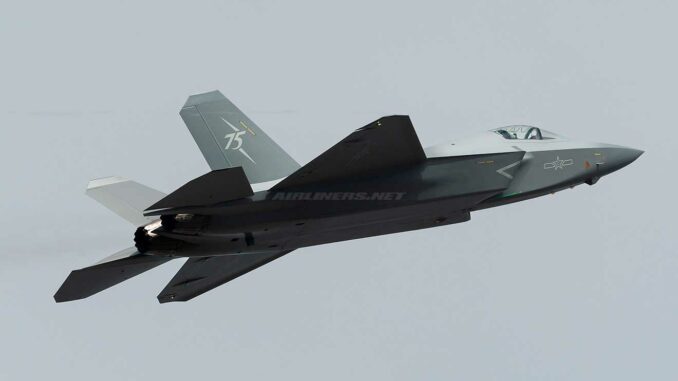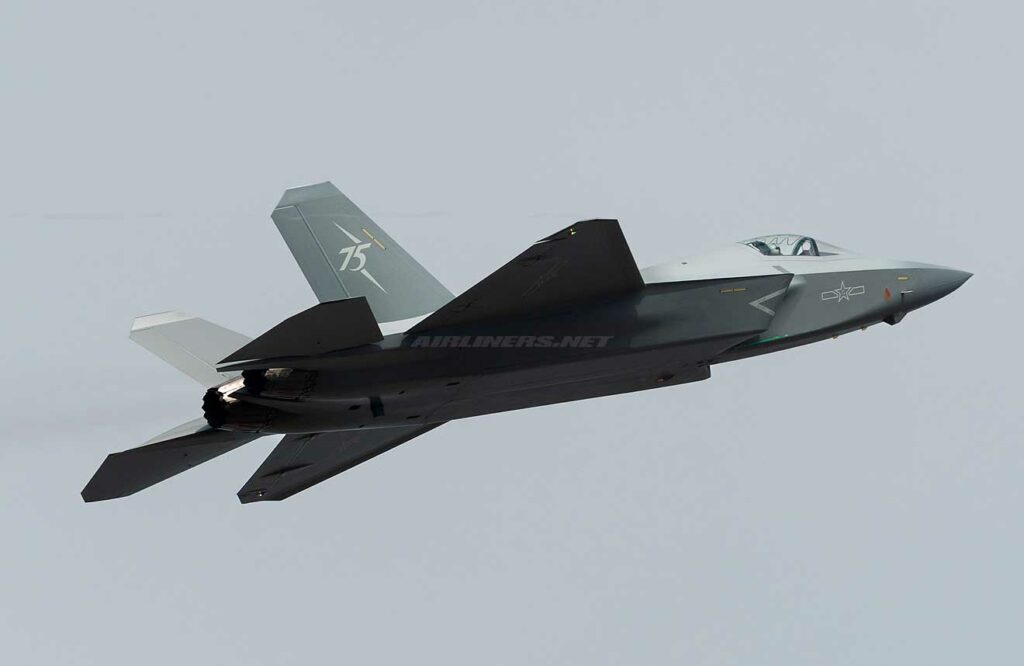
Technical analysis of the delivery of the Chinese J-35 fighter jet to Pakistan in 2025: strategic impact on India.
Pakistan is preparing to receive 40 Chinese J-35 stealth aircraft, according to an agreement confirmed by the Pakistani authorities. Deliveries are set to begin in August 2025, after more than six months of pilot training in China. The agreement includes a 50% discount and favorable payment terms. This is the first export of a Chinese fifth-generation fighter jet, raising serious concerns in India, where the lack of a comparable stealth aircraft could potentially create a lasting deficit. The J-35, derived from the FC-31, combines AESA radar, internal warheads, and advanced avionics, and operates in a network via PL-15E missiles already acquired by Islamabad. This transfer repositions Pakistan among the few operators of stealth platforms, making the military balance in South Asia even more uncertain.
The design and technical capabilities of the J-35
The J-35, derived from the FC-31 project by Shenyang Aircraft Corporation, is a fifth-generation Chinese fighter jet with two engines. It features a flying wing airframe with slanted tail fins and S-shaped air intakes, reducing its radar cross section (RCS). Weapons are stored in internal bays, preserving its stealth capabilities.
The J-35A exported to Pakistan is optimized for multi-role missions: air superiority and air-to-ground attack. It is equipped with an AESA radar and an infrared search-and-track (IRST) system. Its maximum speed exceeds Mach 1.6, its empty weight is estimated at 17 tons, and its internal payload capacity is approximately 6 tons. Compatible with the PL-15E missile (range reduced to 145 km in the export version), it benefits from an integrated firing network capable of sharing data with other platforms.
Its engine is based on two Chinese turbofans, offering redundancy and greater power than the F-35’s single-engine configuration. This architecture affects its weight and thermal signature, but enhances reliability in the event of engine failure. The J-35 is also equipped for electronic warfare missions, with integrated passive and active countermeasures.

The strategic and regional context
The delivery of the J-35s repositions Pakistan among the ranks of modern air forces. This is the world’s first export of a fifth-generation Chinese stealth aircraft. This transfer comes at a time when India has no active stealth platform; its AMCA program will not be operational until around 2035. This asymmetry could influence political decisions and military postures in the region.
Pakistani pilots have been undergoing intensive training in China for six months, preparing for missions as soon as the first deliveries are made. At the same time, China is delivering complementary systems such as KJ-500 AWACS aircraft and HQ-19 SAM missiles, further enhancing Pakistan’s stealth strike capability.
Furthermore, these deliveries are accompanied by a 50% discount. This level of financial support has provoked mixed reactions in China, with some believing that national capabilities such as the J-10 deserve greater budgetary priority.
India’s reactions and expected responses
In India, several veterans of the Indian Air Force are warning of a marked imbalance. The emergence of a Pakistani stealth aircraft could delay radar detection in head-on flight and complicate the management of a two-front theater with China. This could increase India’s dependence on Rafale and anti-stealth programs, particularly low-frequency radars.
In response to this threat, India is accelerating the AMCA, a fifth-generation national program that has received ministerial approval but is not expected to enter service until around 2035. Other responses include upgrading UHF/VHF radars, strengthening AI capabilities for spectrum processing, and developing stealth drones or UCAVs to bridge the gap.
Technical issues and logistical challenges
The delivery of 40 J-35s poses logistical challenges. Pakistan will need to set up dedicated infrastructure: air-conditioned hangars, RAM maintenance, refueling training, and a China-Pakistan support network. Pilots must master the PL-15E missile, stealth tactics, and combat network operations.
Technically, the J-35 has never been tested in actual combat. Its stealth level, often compared to the F-35 (SER ~0.001 m²), remains an unverified indicator in the field. In addition, the complete combat network (AWACS, SAM, and integrated command) is essential to exploit its full potential.
Finally, the early delivery date of August 2025 for a platform still in its early stages (LRIP) in the Chinese Army poses a major industrial challenge. If the pace is maintained, this will represent a significant industrial leap forward for China.

Future prospects and regional balances
In the medium term, Pakistan will have a unique technological advantage. Combined with the J-10C and JF-17 Block 3, it will be able to form strategic stealth squadrons. This positioning could prompt India to seek new cooperation, particularly with the United States for the purchase of F-35s or the modernization of radars.
Strategic dynamics are also evolving on the diplomatic front: Pakistan is strengthening its position between China and the US, balancing IMF financing and military rapprochement.
In the West, this export marks a shake-up: cutting-edge technology sold to an ally of a rival, with implications for NATO and Indo-Pacific partnerships. Countermeasures could include the development of next-generation radars, stealth identification algorithms, and a resilient electromagnetic network.
War Wings Daily is an independant magazine.